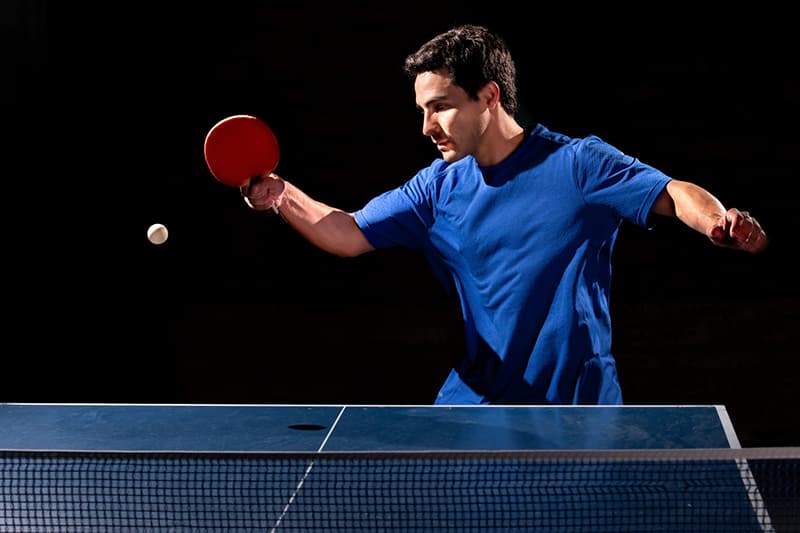Table tennis, a globally beloved sport, is not only a test of agility and skill but also a domain where equipment plays a crucial role. The world of table tennis gear is filled with intriguing nuances and historical developments that many enthusiasts are unaware of. This article aims to shed light on some of the most unusual and fascinating aspects of table tennis equipment.
The Early Days: A Diverse Beginning
The journey of the table tennis ball, a key component of the sport, is a tale of evolution and innovation. Originally, players used balls made of varied materials like cork, rubber, and even webbed cloth, which greatly differed from today’s standard. It was only in the latter part of the 20th century that the shift to the celluloid and plastic balls, measuring about 40mm, occurred. This change was driven by the desire for a more consistent bounce and improved visibility, catering to both players and spectators. The adaptation of these materials marked a significant turning point in the sport’s history, reflecting a continuous quest for perfection.
Engineering the Perfect Bounce
The precise bounce of a table tennis ball, a seemingly simple characteristic, is a result of complex engineering. To achieve the standard bounce of approximately 23cm when dropped from 30cm, manufacturers meticulously control various factors. The composition of the material, the thickness of the ball, and the internal air pressure are all finely tuned to reach this exact bounce. This level of precision underscores the sophistication involved in the manufacturing process, a testament to the sport’s scientific underpinnings.
Blades: Layers of Complexity
At the heart of a player’s arsenal is the blade, a component often mistaken for a mere slab of wood. Modern blades, however, are marvels of engineering, comprising multiple layers of wood and sometimes incorporating materials like carbon fiber or titanium. Each layer is strategically arranged to modify characteristics such as speed, spin, and overall control. The composition and arrangement of these layers are critical, allowing players to tailor their equipment to their specific style of play, a practice that has become an art in itself.
Rubber: The Game Changer
The rubber on a table tennis racket is a crucial element that can dramatically alter the dynamics of the game. There are primarily two types: pips-in, which offers a smooth surface, and pips-out, characterized by a bumpy texture. Each type influences the ball’s spin and speed in distinct ways. The choice of rubber is a strategic decision for players, often requiring extensive experimentation to find the perfect match for their playing style. This variety in rubber types adds a rich layer of strategy to the sport, making equipment selection a critical aspect of the game.

The Subtle Influence of Weight
A factor often overlooked in table tennis is the weight of the racket. This attribute can have a significant impact on a player’s performance. A heavier racket might provide more power, but it can compromise speed and maneuverability. Conversely, a lighter racket allows for swifter movements but may lack the force behind shots. Additionally, how the weight is distributed within the racket can influence the ease of imparting spin. This delicate balance of weight and distribution plays a vital role in a player’s ability to execute precise shots and strategies.
The Color Rule: More Than Aesthetic
One intriguing aspect of table tennis equipment is the mandatory color scheme of rackets: one red and one black side. This rule was introduced to prevent confusion and ensure fairness in the game. Before this regulation, players used similar colors on both sides of their rackets, which made it challenging for opponents to predict the type of spin or speed of the incoming ball. By standardizing the colors, players can now anticipate and react to their opponent’s moves more effectively, adding an additional layer of strategy to the sport.
Glue: A Critical Component
The type of glue used in attaching the rubber to the blade is not just a trivial detail; it significantly influences the playing characteristics of the racket. Different types of glues can affect factors such as speed, spin, and overall feel of the racket. Some players prefer water-based glues for a more controlled play, while others may opt for VOC-based glues to enhance speed and spin. This choice is another area where players can customize their equipment to fit their unique playing style.
Customization: Crafting the Perfect Racket
Many professional table tennis players take equipment customization to the next level. This process can involve modifying the blade’s shape, altering the rubber’s thickness, and even adjusting the handle’s grip. Such bespoke customization ensures that the racket perfectly aligns with the player’s technique and preferences, becoming an extension of their skill and strategy. This level of personalization highlights the profound connection between players and their
